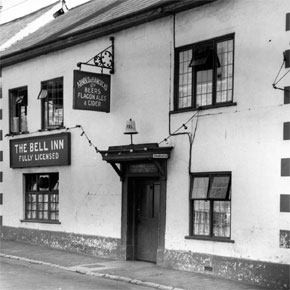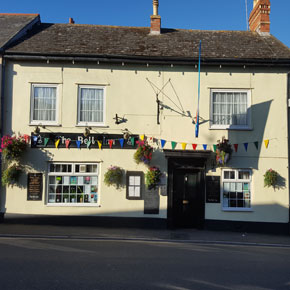Watchet's Heritage - The Bell Inn


The Bell Inn is the town's oldest surviving pub and is thought to have been rebuilt on the site
of a former tavern also called the Bell in 1630, but there is a record of a public house here
called the Bell from as early as 1539.
It will have entertained a good many residents and visitors through the centuries but perhaps none better known than Samuel Taylor Coleridge, William Wordsworth and his sister Dorothy. It seems likely that the poets stayed here in the autumn of 1797 when they stopped off on their way to Exmoor. This was the time when Coleridge was working on his iconic poem, the Ancient Mariner, which was included in a joint publication with Wordsworth the following year, called "The Lyrical Ballads". It seems very likely that this short visit would have provided the young poet with some inspiration from conversations with some of the 'old sea dogs' of Watchet.
This extract, "The fair breeze blew, the white foam flew, the furrow followed free" from the poem can be seen on the facing wall on the East Pier.
The Bell has a long history and the Medieval Court Leet meets here annually and has done for at least three hundred years. The Court Leet, one of just a handful that survives today, was directly accountable to the Lord of the manor and was formed here in Watchet in 1243. Constables, pound keepers and ale tasters were just a few of officers that were and continue to be elected, with, of course, a town crier who can often be seen out and about even today.
The building has undergone many changes over the years but interesting is the exceptionally wide door which was built this way to accommodate horses that would be led through to the stabling behind where the skittle alley is today.
For further information about the town as a whole,
please visit the home page or click
Here
This page is provided by Watchet Conservation Society with the help of Watchet Chamber of Trade
Text and history provided by Nick Cotton
